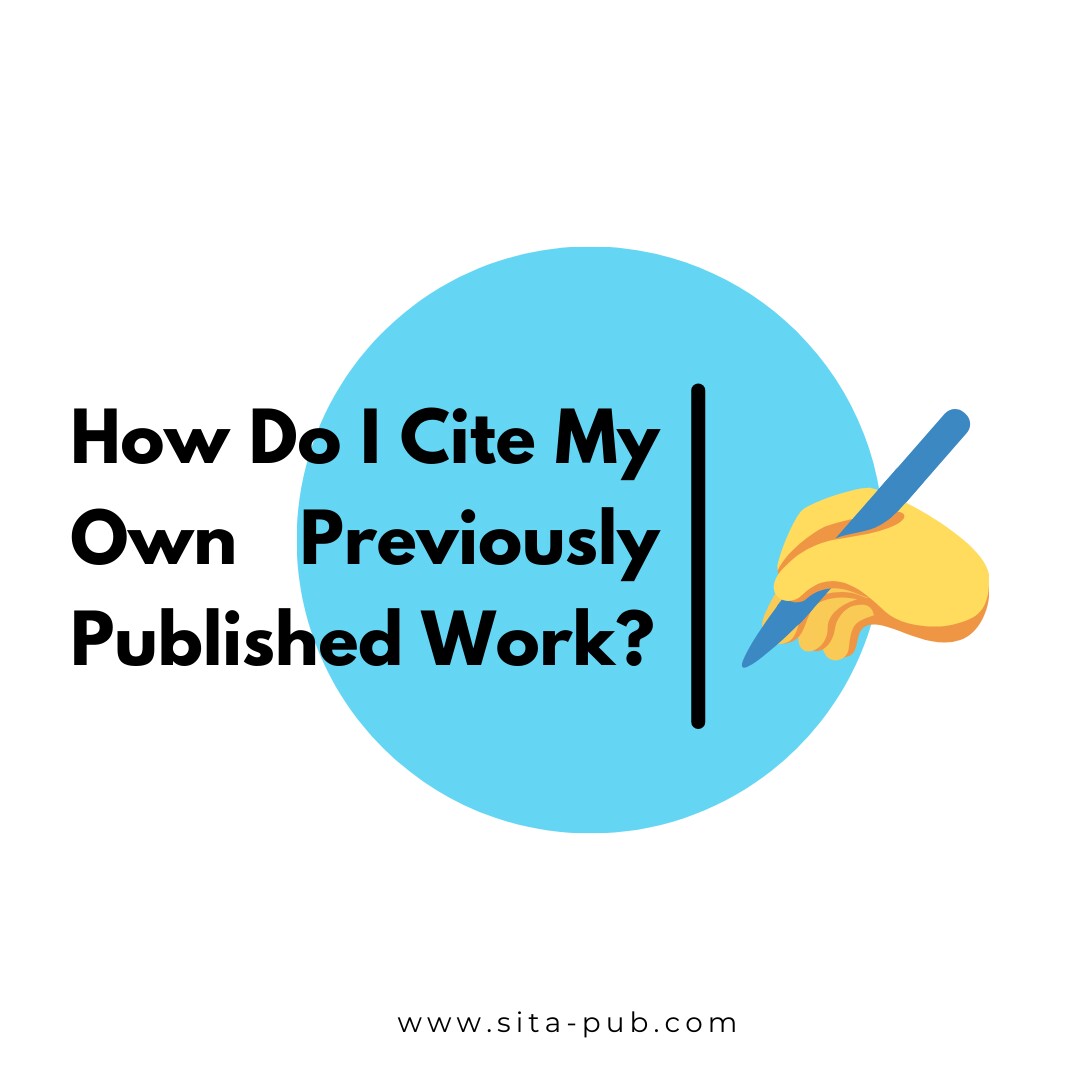How Do I Cite My Own Previously Published Work?


Citation is the practice of acknowledging the sources of information or ideas that you use in your research. When you cite, you provide specific details about the work you are referencing. This allows readers to find the original source. Citations serve several purposes, including giving credit to the original authors, adding authority to your arguments, and helping readers explore further reading on the topic.

There are several citation styles used in different academic fields. Here are some common ones:
APA (American Psychological Association): Used mainly in social sciences, education, and psychology. It uses an author-date format.
MLA (Modern Language Association): Common in the humanities, especially in literature. MLA uses a parenthetical style that focuses on the author’s name and page number.
Chicago/Turabian: Chicago style is used in history and some social sciences. Turabian is a simpler version for college students. Both styles use footnotes or parenthetical citations.
IEEE (Institute of Electrical and Electronics Engineers): Used mainly in engineering and computer science. This style uses numbered citations in square brackets.
Harvard: Often used in the UK and Australia, it follows an author-date format like APA.
Choosing the right citation style is important because different fields have their own rules.

Citing sources is essential for several reasons:
Plagiarism is the unethical practice of using someone else's work or ideas without giving proper credit. This includes your own previous work. If you do not cite it, it can lead to self-plagiarism, which is just as serious. Self-plagiarism happens when you reuse parts of your earlier publications without acknowledgment, misleading readers into thinking your current work is entirely new.
Citing your own work adds credibility to your current research. It shows that you have expertise in the topic and that your conclusions are based on solid foundations.
Citations provide readers with a way to find your previous research. This allows them to explore related studies and understand the context of your current work.
When citing your own previously published work, follow these guidelines:

Use the Appropriate Citation Style: Make sure you follow the citation style required for your current paper. This includes formatting the citation correctly according to that style's guidelines.

Be Concise: While it’s important to cite your previous work, avoid citing too much of it. Reference it in a way that supports your current research without repeating too much information.

Provide Context: When citing your own work, briefly explain how it relates to your current research. This helps clarify why the citation is relevant and how it contributes to your argument.

Avoid Self-Plagiarism: Always cite your previous publications, even if you are the author. Not doing so can lead to self-plagiarism, which can harm the integrity of your research. This includes not just direct quotes but also ideas and findings from your earlier work.

Follow Journal Guidelines: If you are submitting to a journal, check their specific rules about self-citation. Some journals may have limits on how much you can cite your own work.
Citing your own previously published work is essential in academic writing. It helps avoid self-plagiarism, strengthens your credibility, and guides readers to related research. By understanding the importance of citation, familiarizing yourself with different citation styles, and following best practices, you can effectively incorporate your past work into your current research while maintaining academic integrity. Remember, proper citation is not just a formality; it is a key part of scholarly communication.
If you're looking to ensure your research papers meet the specific formatting guidelines of your target journals, SITA is here to help! Our expert team specializes in formatting your documents to adhere to various journal standards, saving you time and reducing stress. With our support, you can focus on your research while we take care of the details. Let SITA assist you in presenting your work professionally and increasing your chances of publication success.
If you have any questions, inquiries, or would like to learn more about our services, please don't hesitate to reach out to us. Our dedicated team is ready to assist you.